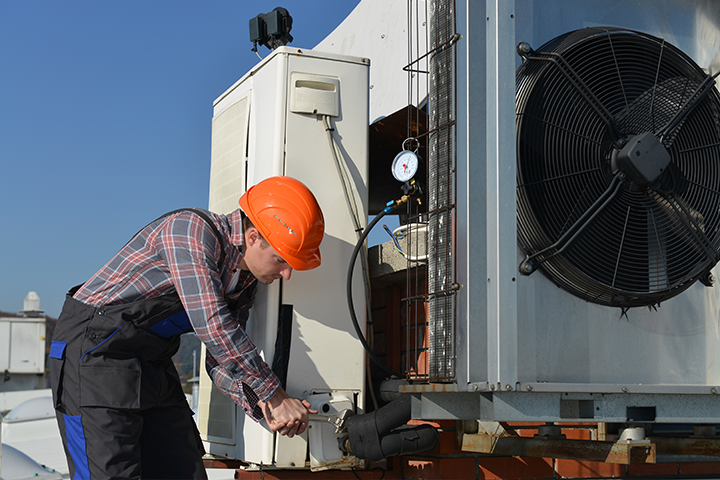Sustainable HVAC Solutions Canoga Park - HVAC Company - HVAC Contractor
Sustainable HVAC Solutions Canoga Park - HVAC Company - HVAC Contractor
Blog Article
Indoor Air Quality Canoga Park HVAC Contractors
Indoor air quality significantly affects your well being and general well-being. Understanding the means to check indoor air quality at house can empower you to create a healthier residing environment. Most individuals spend a considerable amount of time indoors, usually greater than they realize. This makes it important to ensure that the air you breathe is clean and free from pollution.
Various factors can have an effect on indoor air quality. Common pollution embody mud, pet dander, mildew spores, volatile natural compounds (VOCs), and family chemical substances. The accumulation of these pollutants can result in short-term discomfort and long-term well being issues. Symptoms might include headaches, irritated eyes, fatigue, and respiratory issues. Identifying these pollutants is step one towards enhancing the air you breathe.
The first step in checking indoor air quality entails being aware of any odors or noticeable adjustments within the air. Unpleasant or strong odors can point out an underlying drawback. A lingering musty smell might level to mildew growth, whereas sharp chemical odors can trace on the presence of VOCs from cleaning products or paints.
HVAC Financing Options Canoga Park HVAC Contractor & HVAC Tune-ups
Using a visual approach is another effective method to assess indoor air quality. Inspect areas susceptible to moisture, similar to bogs and kitchens, for signs of mildew progress. Look for peeling wallpaper, dark spots on partitions, or water stains, as these can point out humidity or leaks. Additionally, check areas where mud can accumulate, like vents, baseboards, and cabinets.
Checking humidity ranges is crucial for maintaining good indoor air quality. Excess humidity can promote the expansion of mold and dirt mites, whereas low humidity can lead to dry skin and respiratory discomfort. A hygrometer may help you monitor indoor humidity. The best indoor humidity level should range between 30% and 50%.

Sustainable HVAC Solutions Canoga Park Request a Consultation - HVAC Contractor
Another technique to check indoor air quality is to evaluate the efficiency of your air flow system. Proper ventilation helps dilute indoor pollutants. If your home lacks proper airflow, think about installing an air exchange system or using exhaust followers in essential areas like kitchens and bathrooms. This motion not solely helps take away stale air but additionally brings in fresh air from outdoors.
The type of furnishings and supplies used in your home can contribute to indoor air quality issues. Some furnishings, particularly older gadgets, may emit VOCs that have an result on air quality. When purchasing new furnishings, opt for low-VOC or no-VOC choices to reduce potential sources of indoor air pollution.
Plants can play a crucial position in enhancing indoor air quality. Certain houseplants are known to soak up dangerous pollution. Spider plants, snake crops, and peace lilies are a few examples that thrive indoors and promote better air quality. However, ensure that the vegetation are suitable for your living environment to keep away from any unintended penalties.
MERV Filters Canoga Park HVAC Instant Rebate Program - Find a Contractor
Regular maintenance of heating and cooling methods is vital for air quality. Filters in HVAC systems accumulate mud and different particles over time. Cleaning or replacing these filters often can enhance airflow and cut back contaminants circulating via your house. Also, think about scheduling professional inspections to make sure methods are functioning optimally.
Carbon monoxide detectors and radon testing are other critical components of indoor air quality checks. Carbon monoxide is a colorless, odorless fuel that can be deadly if present in high concentrations. Installing detectors in key areas and following security pointers helps ensure you stay protected.
Radon, another invisible fuel, can seep into properties and poses critical well being risks. A easy radon test can determine if ranges are elevated. Taking corrective actions, similar to improved ventilation or sealing cracks, can mitigate this risk and improve overall air quality.
Once you establish sources of indoor pollution, proactive measures can significantly enhance indoor air quality. Regularly dusting surfaces, vacuuming carpets, and cleansing upholstery contribute to lowering allergens. Implementing a no-shoes policy within your house can even minimize filth and contaminants tracked indoors.
Energy Efficiency HVAC Canoga Park Contractor Locator
Air purifiers could be efficient tools for enhancing air quality. They work by my sources filtering out dangerous particles and improving air flow. When choosing an air purifier, consider the dimensions of the room and the sort of filter it uses. HEPA filters are significantly efficient in capturing fantastic particles and allergens.
An awareness of your residing setting is crucial for detecting hidden air pollution sources. Common household merchandise, such as cleaners, pesticides, and air fresheners, can introduce harmful chemical substances into your house. Opting for natural options can reduce your publicity to those substances and promote a healthier ambiance.
By implementing systematic checks and becoming proactive about air quality, you'll be able to significantly improve your indoor environment. Simple steps similar to bettering ventilation, using air purifiers, and sustaining humidity ranges create a holistic method to indoor air quality.
Indoor Air Quality Canoga Park Commercial HVAC Contractor

Taking these measures will allow for a safer, more pleasant living setting. Your health, comfort, and total quality of life depend upon the air you breathe. Understanding the way to check indoor air quality at house equips you with the knowledge to reduce risks and create a healthier house for you and your loved ones. Knowledge is power when it comes to sustaining the standard of the air in your home.
Indoor Climate Control Canoga Park Commercial HVAC Contractor
- Utilize an indoor air quality monitor to evaluate levels of pollution, humidity, and temperature in real-time.
- Test for risky natural compounds (VOCs) by utilizing passive sampling devices, which may help determine sources of indoor air pollution.
- Measure particulate matter with a laser particle counter, offering insight into dust, pollen, and different airborne particles.
- Conduct a carbon monoxide test using a dedicated sensor to ensure ranges remain under the protected threshold.
- Observe the presence of mold by checking for dampness or musty smells in hidden areas like basements or bathrooms.
- Regularly examine humidity ranges with a hygrometer, aiming for a balanced range of 30-50% to forestall mold progress and improve consolation.
- Implement house air quality checks that focus on radon detection, significantly in basements or ground-level rooms.
- Monitor air quality modifications after utilizing cleaners or airborne products, noting potential reactions or discomfort to pinpoint sources of irritation.
- Plan for regular ventilation by opening home windows or using exhaust followers to improve airflow and cut back indoor pollution.
- Become aware of and restrict the utilization of synthetic supplies in furnishings and decor that can off-gas dangerous chemical compounds.undefinedWhat is indoor air quality and why is it important?
- Air Conditioning Repair Canoga Park
Indoor air quality refers to the condition of the air inside and round buildings. It is essential as a outcome of poor indoor air quality can result in various health issues, including respiratory problems, allergy symptoms, and different diseases. Maintaining good air quality promotes general well-being and luxury.
How can I inform if my indoor air quality is poor?
Gas Line Services Canoga Park HVAC Air Conditioning Contractors
Signs of poor indoor air quality embody persistent odors, seen mould development, extreme dust, and well being signs corresponding to complications, fatigue, or respiratory points. If you notice these indicators, it’s wise to evaluate your indoor air quality further.
What instruments can I use to examine my indoor air quality?
Furnace Repair Canoga Park HVAC Contractor - Heating, Cooling Services
You can use a quantity of instruments to evaluate indoor air quality. Air quality screens can measure ranges of pollution visit the site like particulate matter, risky organic compounds (VOCs), carbon dioxide, and humidity. Simple DIY exams for mold or allergens are also available.
How often ought to I examine the indoor air quality in my home?
Eco-Friendly HVAC Canoga Park HVAC Contractor - Heating, Cooling Services
It’s beneficial to check indoor air quality no less than once a year. However, you must monitor more frequently when you discover any signs of air quality issues or after renovations, which may improve airborne pollution.
What are widespread indoor air pollutants I should be conscious of?
Zone Control HVAC Canoga Park Top Rated HVAC Contractors
Common indoor air pollutants embody particulate matter, VOCs from paints and cleansing products, mildew, radon, carbon monoxide, and dust mites. Awareness of those pollution may help you're taking steps to mitigate their presence.
How can I enhance the indoor air quality in my home?
HVAC Emergency Repairs Canoga Park #1 HVAC Contractor With 5 Star Reviews
To improve indoor air quality, guarantee correct ventilation, use air purifiers, frequently change air filters, minimize the use of artificial chemical compounds, and maintain a clear setting to scale back mud and allergens.
Are plants efficient in enhancing indoor air quality?
- Licensed HVAC Technician Canoga Park
HVAC Replacement Parts Canoga Park Tips for Hiring an HVAC Contractor
Yes, sure houseplants can help improve indoor air quality by absorbing toxins and growing humidity. Popular air-purifying plants embody spider crops, peace lilies, and snake crops. However, be aware of allergic reactions or sensitivities some crops might cause.